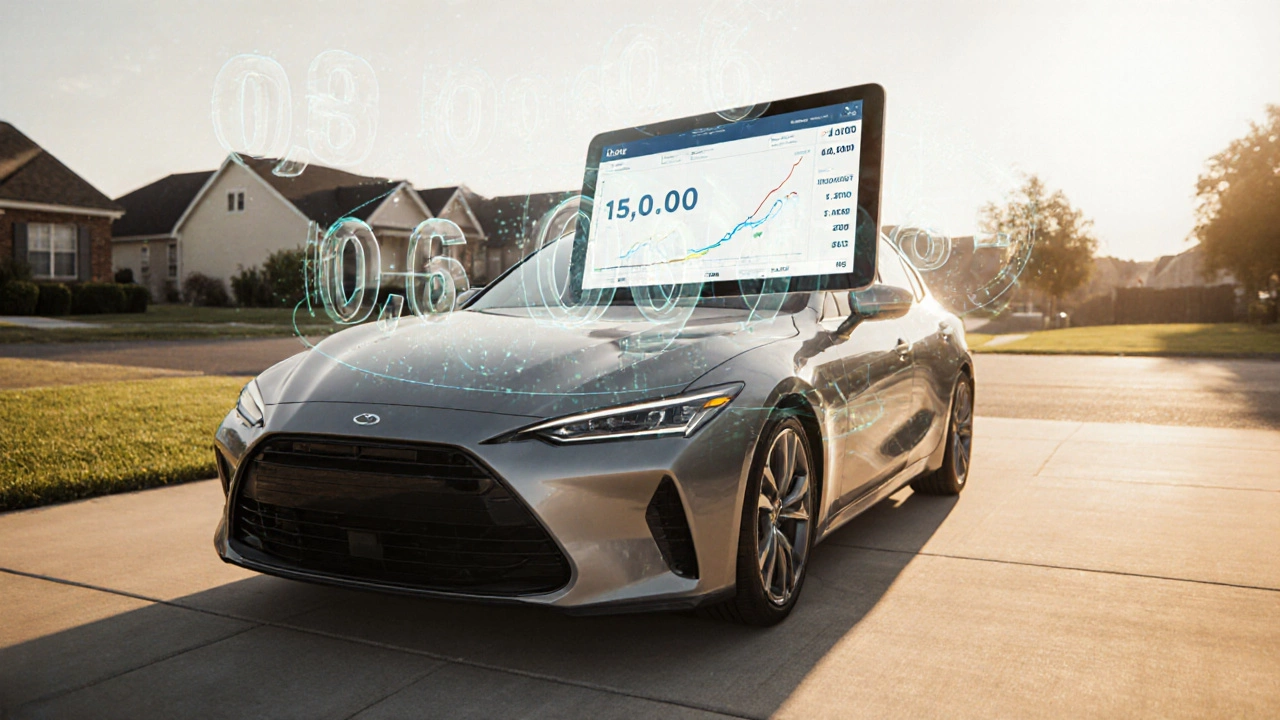Car Loan Payment – How to Calculate and Choose the Right Deal
When thinking about a car loan payment, the amount you’ll owe each month for a vehicle loan. Also called auto loan repayment, it combines the loan amount, interest, term length, and any fees into one predictable figure. Knowing this number lets you compare offers, budget accurately, and avoid surprises down the road. In short, a clear car loan payment calculation is the first step toward a stress‑free ride.
One of the biggest drivers behind that monthly figure is the auto loan interest rate, the percent charged by lenders for borrowing money. A lower rate means less interest over the life of the loan, which directly shrinks your payment. Rates fluctuate with market conditions, your credit profile, and the lender’s risk appetite, so shopping around can save you hundreds of pounds. For example, a 4.5% APR on a £15,000 loan over 60 months yields a payment about £280, while a 6.5% APR pushes it past £300.
Your credit score, the numerical representation of your creditworthiness is the next piece of the puzzle. Lenders use it to gauge how likely you are to repay on time. A score above 750 typically unlocks the best rates, whereas a score under 650 can add a full percentage point or more to the APR. Improving that score a few points before you apply can cut your monthly payment dramatically – sometimes by more than £20.
Beyond rate and score, the structure of the loan matters. loan amortization, the process of spreading out principal and interest over set installments determines how much of each payment reduces the balance versus pays interest. Early in the term, interest takes up a larger slice, but as you progress, the principal portion grows. Understanding amortization helps you see the long‑term cost and decide whether a shorter term, higher payment might actually save money overall.
Car financing options come in many flavors – dealer‑offered loans, bank lines of credit, credit union deals, and even peer‑to‑peer platforms. Each option carries its own fee schedule, prepayment penalties, and flexibility levels. Dealer financing can be convenient but often hides a markup on the rate. Bank loans usually offer transparent terms, while credit unions tend to provide the friendliest rates for members. Knowing the trade‑offs lets you match the financing style to your cash flow and credit situation.
Putting all these pieces together creates a clear semantic picture: car loan payment encompasses auto loan interest rate, credit score, and loan amortization. A solid credit score influences the interest rate you receive, which in turn shapes the amortization schedule and ultimately the monthly payment you’ll owe. This chain of relationships means a single change – like boosting your score – ripples through the entire payment calculation.
Practical Steps Before You Apply
Start by running a quick loan calculator with your target price, desired down payment, and an estimated rate based on your credit tier. Most banks post rate tables, but you can also use the average market APR for a baseline. Next, pull your credit report and verify the score; dispute any errors that could be dragging it down. If the rate looks high, check if a shorter term or a larger down payment could lower the APR enough to offset the higher monthly cash outflow.
Don’t forget to factor in ancillary costs: registration fees, insurance, and any dealer add‑ons. Those items don’t affect the interest rate, but they raise the total amount you’ll finance if you roll them into the loan. Keeping extras separate and paying them upfront can reduce the principal and, consequently, the interest you pay over time.
Finally, compare offers side‑by‑side. Create a simple spreadsheet listing the lender, APR, term length, monthly payment, total interest paid, and any fees. Look for the lowest total cost rather than just the smallest monthly figure – a longer term might make the payment cheap now but cost you a lot more in interest.
Armed with this framework, you’ll be able to read any car loan proposal with confidence. The next section lists articles that dive deeper into each of these topics, from detailed interest‑rate breakdowns to credit‑score improvement tips and real‑world loan‑amortization examples. Explore them to fine‑tune your strategy and drive away with a deal that truly fits your budget.

Learn how to calculate the exact monthly payment for a $15,000 car loan, explore how interest rates, loan terms, and down‑payments affect the cost, and get tips to lower your payment.
Read More